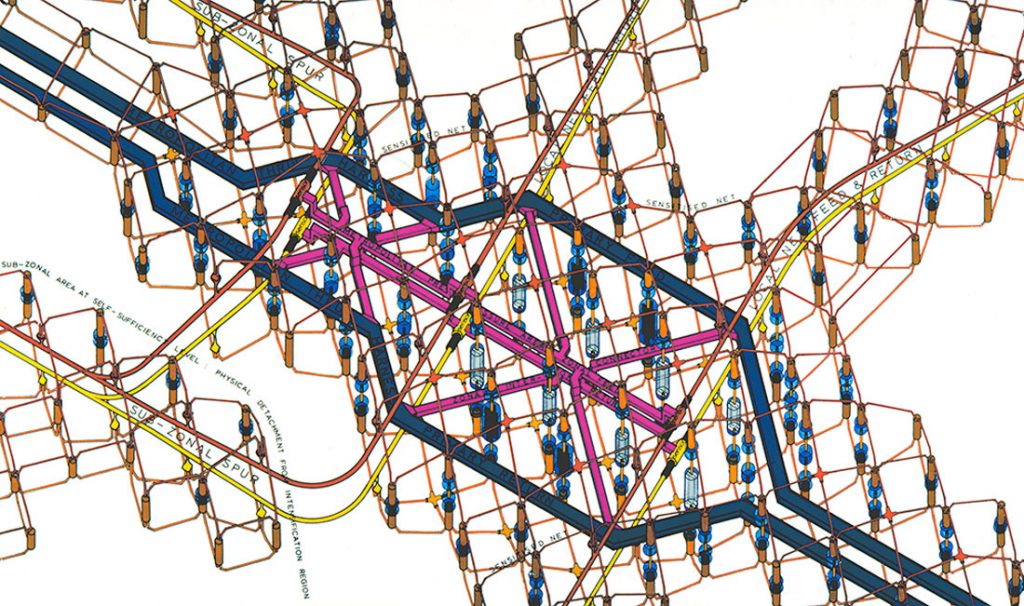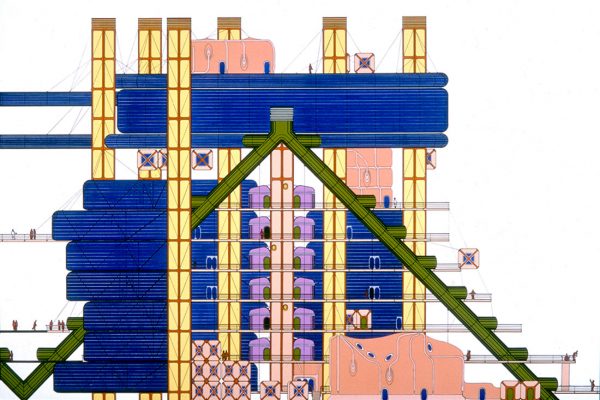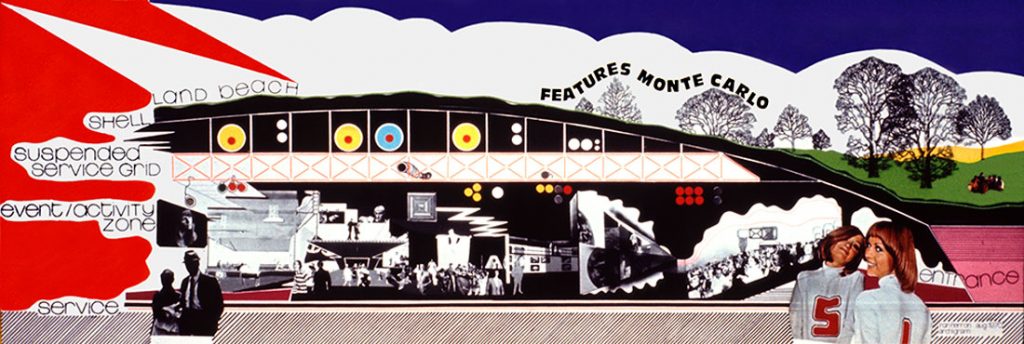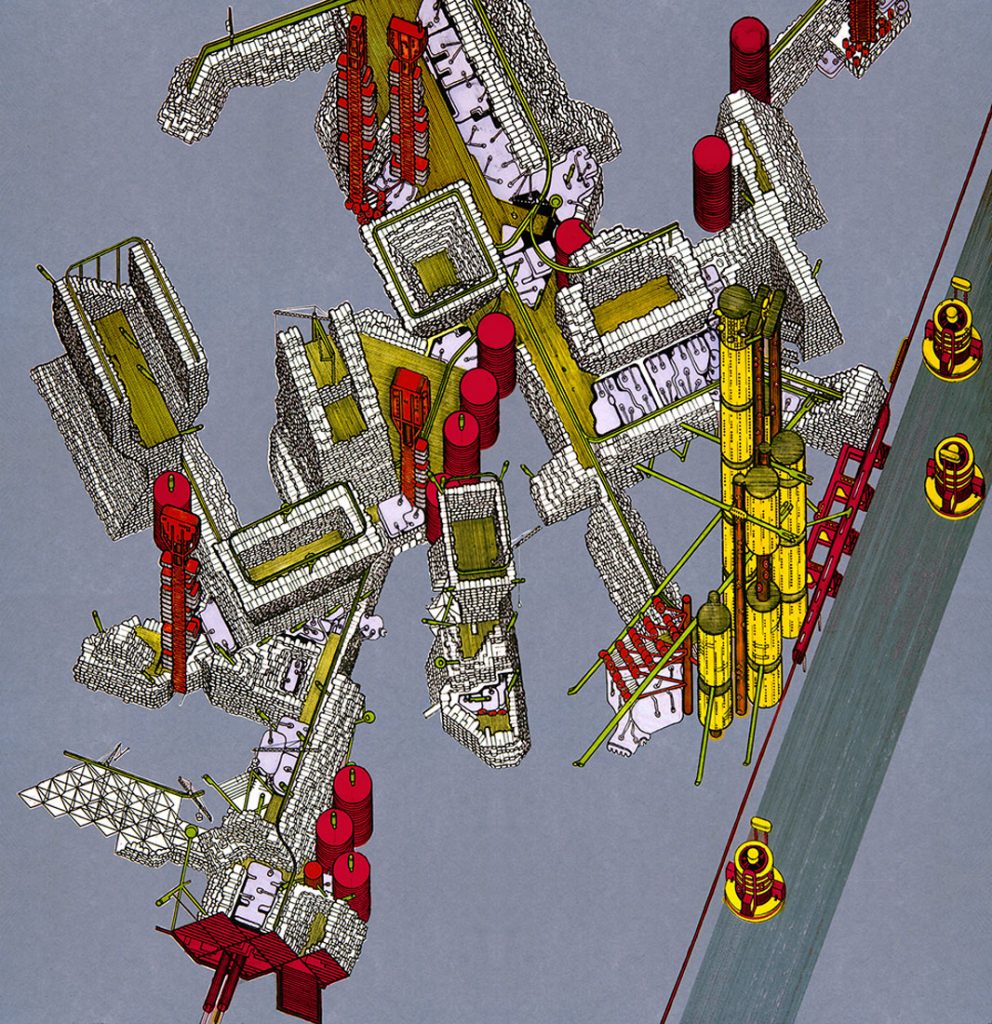Around 20,000 items representing experimental architecture collective Archigram’s 1960s and ’70s projects have been acquired by Hong Kong’s M+ museum.

Plug-In University Node, Elevation. Peter Cook, © Archigram 1965
January 31st, 2019

Computer City, Axonometric, Dennis Crompton, ©Archigram 1964

Instant CityIn a Field, Typical Set-up. Peter Cook, © Archigram 1969

Plug-In University Node, Elevation. Peter Cook, © Archigram 1965
The core of the archive consists of approximately 20,000 items, including more than 3,000 drawings, prints, sketches, models, videos, ephemera, and other materials from some 200 projects the group produced in the 1960s and 1970s. The archive is hailed as one of Britain’s most important post-war architectural works.

Features Monte Carlo, Explanatory section © Archigram 1970

Plug-In City, Overhead View, (Axonometric). Peter Cook, © Archigram 1964
A searchable and comprehensive guide for specifying leading products and their suppliers
Keep up to date with the latest and greatest from our industry BFF's!

Sub-Zero and Wolf’s prestigious Kitchen Design Contest (KDC) has celebrated the very best in kitchen innovation and aesthetics for three decades now. Recognising premier kitchen design professionals from around the globe, the KDC facilitates innovation, style and functionality that pushes boundaries.

The Sub-Zero Wolf showrooms in Sydney and Melbourne provide a creative experience unlike any other. Now showcasing all-new product ranges, the showrooms present a unique perspective on the future of kitchens, homes and lifestyles.

Suitable for applications ranging from schools and retail outlets to computer rooms and X-ray suites, Palettone comes in two varieties and a choice of more than fifty colours.

Marylou Cafaro’s first trendjournal sparked a powerful, decades-long movement in joinery designs and finishes which eventually saw Australian design develop its independence and characteristic style. Now, polytec offers all-new insights into the future of Australian design.
The internet never sleeps! Here's the stuff you might have missed

A third in the series of boutique hotels under the Lloyd’s Inn brand, Lloyd’s Inn Kuala Lumpur bring the immediacy of nature to the new high-rise hospitality experience in the heart of a bustling city. “Lloyd’s Inn Kuala Lumpur is unique from the other properties in that it is a high-rise development, with more than […]

With Milan 2024 only a few weeks away, we sneak a view of some of the most exciting pieces set to go on show – from lighting design to furniture, here are nine preview products.